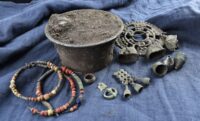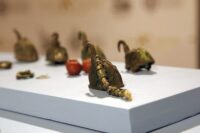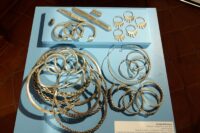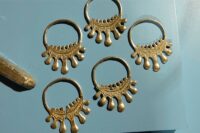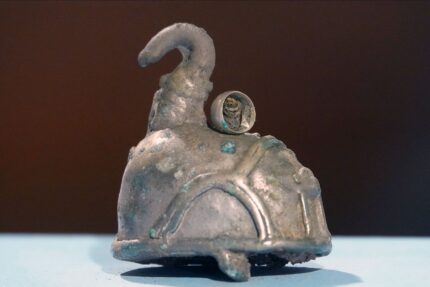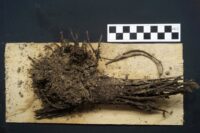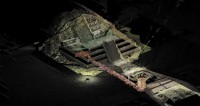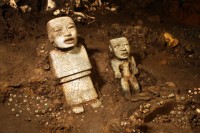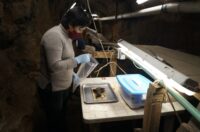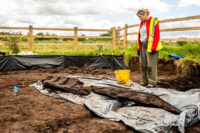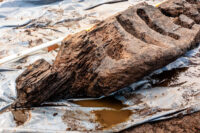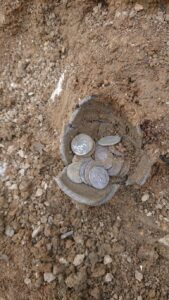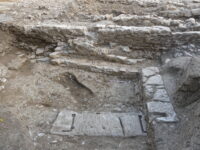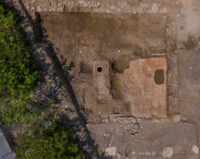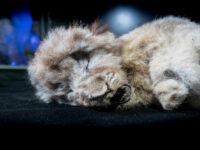 The number of cave lion cubs preserved in the permafrost of Yakutia, eastern Siberia, has doubled with the discovery of two more. One of them, a little female named Sparta, was so effectively mummified her whiskers, teeth, skin, fur and internal organs are still intact. She is the best-preserved Ice Age animal ever discovered.
The number of cave lion cubs preserved in the permafrost of Yakutia, eastern Siberia, has doubled with the discovery of two more. One of them, a little female named Sparta, was so effectively mummified her whiskers, teeth, skin, fur and internal organs are still intact. She is the best-preserved Ice Age animal ever discovered.
The cave lion (P. spelaea) was widely spread throughout eastern Siberia in the Late Pleistocene period, especially during the Karginian interstadial (termochron). It seems unlikely that it is a coincidence that all four mummies of the cave lion cubs found to this day are from the Karginian interstadial and were found in a quite confined area in the river basin in the midstream of the Indigirka River (lower reaches of Uyandina River and Semyuelyakh–Tirekhtyakh River, located only c. 60 km from each other). The large number of cubs found suggests that this area during the Karginian interstadial (when the climate was becoming relatively warm and tree vegetation was spreading) was a favourable breeding site for cave lions. It also seems probable that this site, during this time period, had some characteristics that made it more likely to rapidly freeze and preserve animals. The site was attractive to cave lions for making dens, but it was probably also susceptible to them collapsing.
The two Panthera spelaea cubs were found by mammoth tusk hunter Boris Berezhnev. He came across a male cave lion cub first on the Semyuelyakh River in 2017. He named it Boris after himself, one supposes. The next year he returned to the site and found Sparta 50 feet away from where he had found Boris.
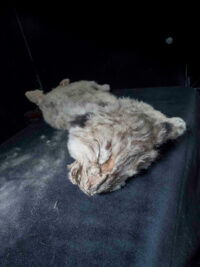 Sparta was between one and two months old when she died 28,000 years ago. Boris, who is less well-preserved, was around the same age as Sparta when he died, but they were not littermates. Radiocarbon dating found he lived long before her, around 43,500 years ago.
Sparta was between one and two months old when she died 28,000 years ago. Boris, who is less well-preserved, was around the same age as Sparta when he died, but they were not littermates. Radiocarbon dating found he lived long before her, around 43,500 years ago.
Boris and Sparta were transported to Yakutsk for examination. After microbiological tests found the frozen cubs carried no infectious diseases, they were CT scanned, radiocarbon dated and DNA was extracted. The cubs’ bodies were twisted on their axes and deformed under tens of thousands of years of permafrost pressure, but researchers were able to document the skeletal structure and organs from the tomographic images. Sparta was found to have a uterus-like organ, and Boris testicle-like organs. Researchers were confident enough from what they saw on the scans to conclude Sparta was female and Boris male. DNA analysis then confirmed the sexing.
The preliminary examination of the cubs’ mummies shows that the colour of the hair coat was changing from the juvenile yellowish-brown shade to a more ‘adult’ one, light grey to brown, at some point between 1–2 weeks and 1–2 months. Adult lions probably had light grey hair, well adapted to the Siberian Arctic, which is snow covered for two-thirds of the year.
It is known that cave lions had thick long fur undercoats consisting of strombuliform aeriferous hair. It covers the bodies of mummified lion cubs evenly and most likely helped them adapt to the cold climate.
The study has been published in the journal Quaternary and can be read here.
